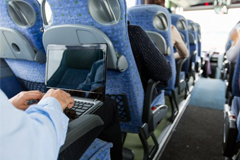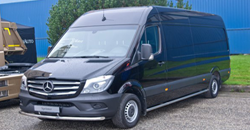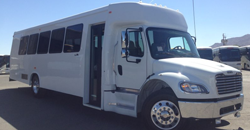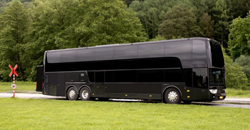Rethinking office design must be done to manage the shift to a hybrid workplace model; employees' transportation must also be considered. Let us now address the important but sometimes disregarded topic of staff transportation management in hybrid work environments. The road to workplace flexibility is full of logistical obstacles. This post will cover how an employee transportation service can be effective for hybrid workplaces.
Unique transportation challenges by hybrid workplaces
Flexibility requirements: Transportation solutions for hybrid workplaces must be adaptable to changing schedules and locations. Usually, flexible transportation solutions are required as employees may choose to create a balance of work from home and office in a week.
Unpredictability in the traffic: When workers space out their workplace attendance, typical rush hours can become less dependable. Commuters who depend on regular traffic patterns for their travel plans can face traffic jams.
Parking restrictions: Parking management becomes challenging when fewer people are in the workplace at any given moment. Businesses should review their parking regulations to ensure that all workers have equitable access, considering things like carpooling, part-time workplace attendance, and alternate modes of transportation.
Technology integration: Ride-sharing services, flexible parking reservations, and remote access to public transit timetables and routes are examples of how hybrid workplaces may use technology to expedite mobility procedures. Careful preparation and financial commitment are necessary to ensure that new technologies are smoothly incorporated into employees' daily tasks.
Equity-related factors: Issues with mobility in hybrid workplaces can potentially worsen already-existing disparities, especially for workers who depend on public transportation or reside in locales with few transportation choices. Companies must address these differences by offering assistance, financial aid, or other solutions like an employee transportation service so that all workers can access transportation resources reasonably.
How to effectively manage Employee Shuttle Service
Determine Employee Needs: To start, find out what your employees require for transportation. Find out which routes, times, and preferences are most often used by conducting surveys or interviews.
Set Specific Goals: Specify the shuttle service's objectives. Is the goal to increase employee happiness, decrease stress related to commuting, or improve punctuality? Throughout the process, decision-making will be guided by clear objectives.
Design Effective Routes: Create shuttle routes that maximize time and cost savings for most employees. Consider variables such as proximity to public transit hubs, traffic patterns, and distance.
Invest in Appropriate Vehicles: Select eco-friendly, safe, and comfortable automobiles. Make sure they can handle times when demand is at its highest.
Implement a Scheduling System: Employee booking can be streamlined by using applications or scheduling tools. To satisfy different demands, allow for both ad hoc requests and regular reservations.
Hire Skilled Drivers: Employ competent, courteous drivers who prioritize safety and customer service. Give them sufficient instruction in car maintenance, passenger assistance, and route navigation.
Effective Communication: Use diverse methods, including emails and smartphone alerts, to notify staff members about shuttle schedules. Employees can also get information regarding route modifications and service interruptions.
Monitor Performance Metrics: Monitor critical performance metrics such as operating expenses, passenger satisfaction scores, and on-time performance. Utilize this information to pinpoint regions in need of development and to guide your selections.
Get Feedback Frequently: Encourage staff members to use suggestion boxes or questionnaires to offer their opinions on the shuttle service. To improve service quality, proactively handle complaints, and consider ideas.
Adjust and Change: Remain adaptable and modify the shuttle service in response to shifting worker demographics, company requirements, and outside variables such as changes in traffic or infrastructure. Always work to enhance and change the service to satisfy changing customer needs.
Quick Recap
In conclusion, strategic planning and adaptability are needed to manage employee mobility in a hybrid workplace. By providing varied alternatives for commuting, executing effective scheduling, and using technology, companies may augment employee contentment and general welfare. Accept the way work is evolving and give smooth mobility solutions a priority. If you need professional employee shuttle services for your organization, you can contact Elite Limousine.



















